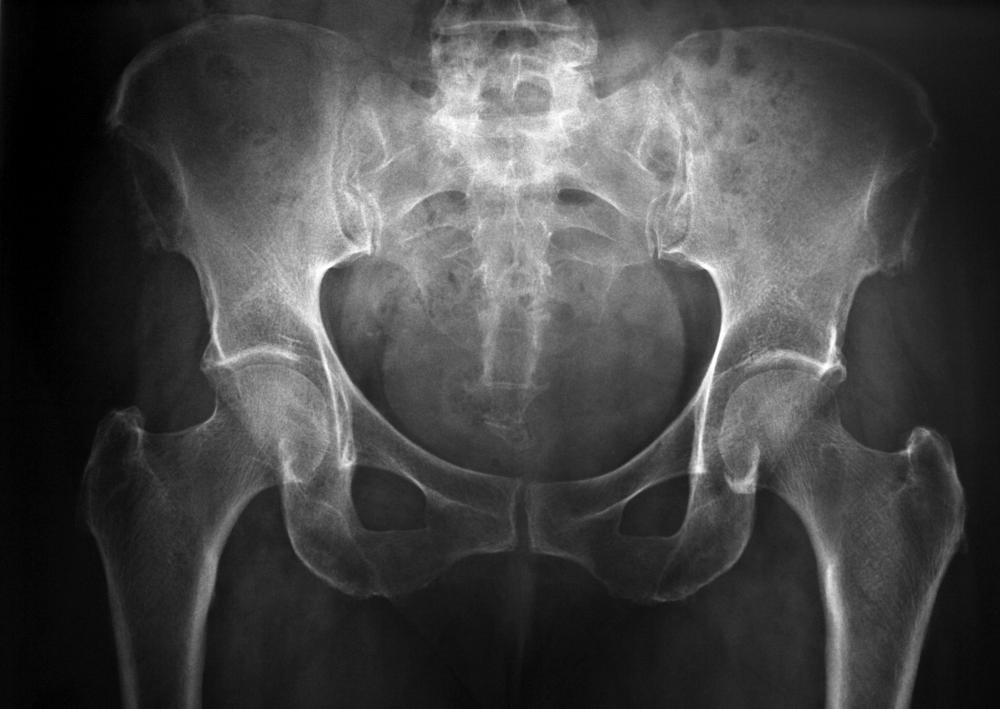At TheHealthBoard, we're committed to delivering accurate, trustworthy information. Our expert-authored content is rigorously fact-checked and sourced from credible authorities. Discover how we uphold the highest standards in providing you with reliable knowledge.
What is a Hydrosalpinx?
A hydrosalpinx is a Fallopian tube with an accumulation of clear fluid caused by blockage. The Fallopian tubes are structures in the female reproductive system that lead from the ovaries to the uterus, and serve to carry mature eggs to the uterus. Fertilization by sperm also takes place in the Fallopian tubes. A hydrosalpinx typically becomes swollen and causes infertility, among other medical problems.
Hydrosalpinx is usually caused by pelvic inflammatory disease (PID) in which the female reproductive organs are inflamed, often as a result of sexually transmitted infection. Gonorrhea and chlamydia are the most common causes. The condition can also be caused by surgical somplications, endometriosis, cancer or the Fallopian tubes or ovaries, or, rarely, tubal tuberculosis. The tubes become blocked as a result of inflammation or a mass, and the fluid that normally passes through begins to build up.

Symptoms include abdominal or pelvic pain and infertility. Often, however, there is no pain and the condition is not noticed if the affected woman is not attempting pregnancy. Diagnosis can be made through ultrasound, an x-ray technique called hysterosalpingogram (HSG) in which a contrast dye is used to image the Fallopian tubes, or laparoscopy, in which a camera is used to inspect the Fallopian tubes through a small incision in the abdomen.

This condition is treated with antibiotics to address any infection, and sometimes by laparoscopic surgery. More invasive surgical procedures to reopen the tubes are no longer common, as the possibility of pregnancy remains low and there is risk of ectopic pregnancy, a dangerous condition in which the fertilized egg is implanted in the Fallopian tube instead of the uterine wall. Ectopic pregnancy is a life threatening medical emergency that negatively impacts a woman's ability to conceive in the future. It most cases, it is not possible to save the child in the case of ectopic pregnancy.
Women with hydrosalpinx are often able to conceive through in-vitro fertilization (IVF). Hydrosalpinx may also be surgically removed, especially if it causes pain. The removal may also promote IVF conception.

Similar, but more serious, conditions are hematosalpinx, in which the Fallopian tube is filled with blood, and pyosalpinx, in which it is filled with pus. Hematosalpinx is associated with ectopic pregnancy, while pyosalpinx is indicative of advanced PID. Both conditions are potentially life threatening, and should be addressed immediately. Another similar condition is tubal phimosis, in which the Fallopian tube is partially blocked. Though tubal phimosis does not lead to fluid buildup, it is associated with infertility and increased risk of ectopic pregnancy.
AS FEATURED ON:
AS FEATURED ON:














Discussion Comments
I was just diagnosed at the ER a couple nights ago with Hydrosalpinx and Pelvic Inflammatory Disease. I was referred to an OB/GYN, however, due to my medical insurance it is a long process before I can get in to see him. I don’t have the cash to do the initial consult while I wait on my insurance.
I’m in a lot of pain the pain meds do not work at all. I’ve been reading things on the internet, trying to inform myself of what exactly this all means. I’m afraid of my tubes rupturing while I await paperwork to go through at an insurance company’s convenience. Does anyone have personal experience with this? It's been three days now. Now the weekend is approaching and there will be no working on my stuff by anyone. The pain is increasing, both the cramps and the sharp pains.
Should I go back to the ER or am I amping myself up being afraid? I’ve got two kids who need me. I can’t afford to have my tubes rupture and bleed out, or have the fluid end up in my lungs. Any advice is welcome, but please keep it informational and positive.
This is a sensitive subject aside from being painful. We were planning another baby as our youngest is now 11, and now, from what I understand, the damage is irreversible, so I'm a bit emotional.
Post your comments